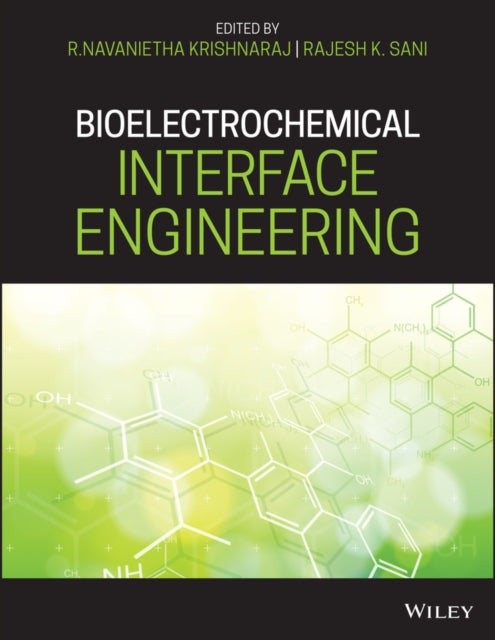Shulph Ink
Bioelectrochemical Interface Engineering
Bioelectrochemical Interface Engineering
YOU SAVE £22.47
- Condition: Brand new
- UK Delivery times: Usually arrives within 2 - 3 working days
- UK Shipping: Fee starts at £2.39. Subject to product weight & dimension
Bulk ordering. Want 15 or more copies? Get a personalised quote and bigger discounts. Learn more about bulk orders.
Couldn't load pickup availability
- More about Bioelectrochemical Interface Engineering
Bioelectrochemical Interface Engineering provides a comprehensive guide to this interdisciplinary field, covering fundamental concepts, electrocatalysis, and advancements in bioelectrochemical systems, including new configurations, materials, and functionalization strategies. It explores applications in remote locations, implantable devices, and controlled drug delivery, and discusses microbial biosensors, microfluidic devices, flexible electronics, and paper and stretchable electrodes. Written for researchers, technicians, and students, it offers a strong foundation for this advanced field.
Format: Hardback
Length: 560 pages
Publication date: 25 November 2019
Publisher: John Wiley and Sons Ltd
Bioelectrochemistry is a rapidly evolving field that combines principles from biology, chemistry, and electrochemistry to study the interactions between living organisms and electrical systems. This interdisciplinary field has the potential to revolutionize various industries, including energy production, environmental remediation, and healthcare. In this article, we will provide an introduction to the fundamental concepts and rules in bioelectrochemistry and explore the latest advancements in the field.
Electrocatalysis is a key concept in bioelectrochemistry, where biological molecules are used as catalysts to accelerate chemical reactions. This process can be used to convert waste into valuable products, such as biofuels and chemicals. Electroactive microorganisms, such as bacteria and fungi, are also used in bioelectrochemistry to produce electricity and treat waste. These microorganisms can be immobilized on electrodes to create bioelectrochemical systems, which can be used to power devices or treat water.
Electron transfer at electrode-electrolyte interfaces is another critical aspect of bioelectrochemistry. This process involves the movement of electrons between the electrode and the electrolyte, which can be influenced by various factors, such as the pH, temperature, and concentration of the electrolyte. Understanding the mechanisms of electron transfer at these interfaces is essential for developing efficient bioelectrochemical systems.
Bioelectrosynthesis is a process where microorganisms produce valuable compounds using electricity. This process can be used to produce biofuels, chemicals, and other products. Biosensors are also used in bioelectrochemistry to detect and measure various biological molecules, such as glucose, cholesterol, and DNA. These sensors can be used in healthcare to monitor patient health and diagnose diseases.
Microfluidic and lab-on-chip devices are increasingly being used in bioelectrochemistry to study the interactions between microorganisms and electrodes. These devices allow for the precise control of the environment and the measurement of small volumes of samples. Flexible electronics are also being used in bioelectrochemistry to create wearable devices that can monitor and control various physiological processes.
Paper and stretchable electrodes are also being developed in bioelectrochemistry to create low-cost and disposable sensors. These electrodes can be used in various applications, such as environmental monitoring and healthcare.
In conclusion, bioelectrochemistry is a rapidly evolving field with the potential to revolutionize various industries. By understanding the fundamental concepts and rules in bioelectrochemistry and exploring the latest advancements in the field, we can develop efficient and sustainable bioelectrochemical systems that can address global challenges such as energy production, environmental remediation, and healthcare.
Weight: 1760g
Dimension: 285 x 221 x 28 (mm)
ISBN-13: 9781119538547
This item can be found in:
UK and International shipping information
UK and International shipping information
UK Delivery and returns information:
- Delivery within 2 - 3 days when ordering in the UK.
- Shipping fee for UK customers from £2.39. Fully tracked shipping service available.
- Returns policy: Return within 30 days of receipt for full refund.
International deliveries:
Shulph Ink now ships to Australia, Belgium, Canada, France, Germany, Ireland, Italy, India, Luxembourg Saudi Arabia, Singapore, Spain, Netherlands, New Zealand, United Arab Emirates, United States of America.
- Delivery times: within 5 - 10 days for international orders.
- Shipping fee: charges vary for overseas orders. Only tracked services are available for most international orders. Some countries have untracked shipping options.
- Customs charges: If ordering to addresses outside the United Kingdom, you may or may not incur additional customs and duties fees during local delivery.


